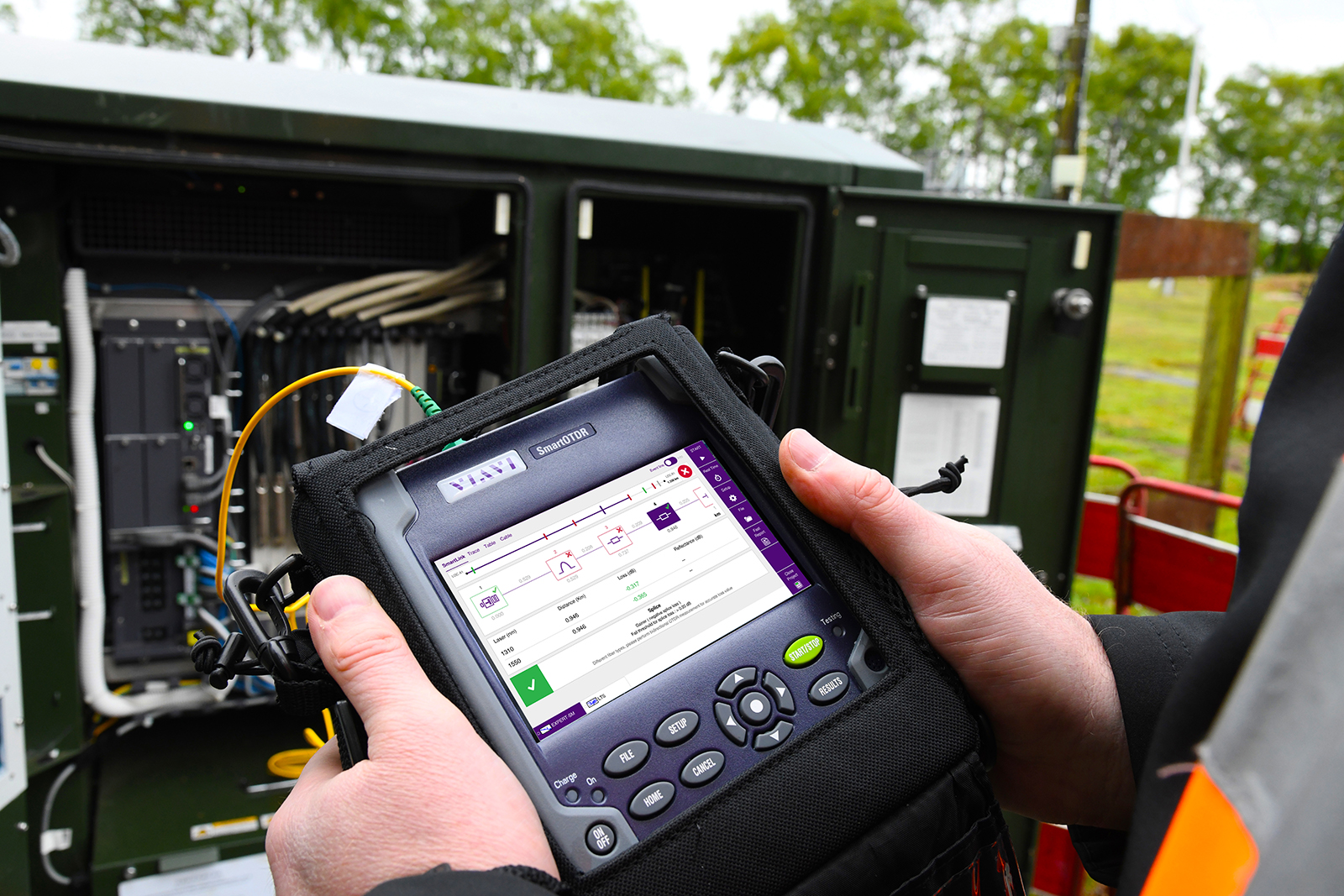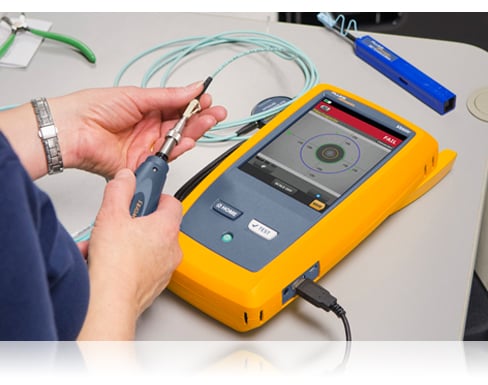Avoid costly mistakes with precise fibre testing equipment protocols
Avoid costly mistakes with precise fibre testing equipment protocols
Blog Article
A Comprehensive Guide to Optical Measurement System for Fiber Evaluation
When it involves fiber evaluation, comprehending optical measurement systems is essential for examining performance and making certain top quality. You'll discover necessary strategies like interferometry and spectroscopy, which aid you gauge crucial criteria. But there's even more to it than simply these approaches; mastering attenuation measurement techniques can significantly affect your network's performance. As you navigate through this overview, you'll discover insights that might change your technique to fiber optics.
Recognizing Optical Measurement Equipments
When you explore optical dimension systems, you'll uncover they're essential for evaluating fibers with precision. These systems utilize light to examine different features of fibers, including size, refractive index, and uniformity. By employing strategies like interferometry and spectroscopy, you can gain important insights into the fiber's properties.You'll locate that these systems are designed to decrease mistakes and boost accuracy, making sure reliable information for your analysis. Different setups, such as single-mode and multi-mode systems, provide to details fiber types, enabling you to choose the finest fit for your needs.Moreover, the combination of innovative software tools aids you interpret the data efficiently, making it simpler to determine any type of inconsistencies or defects. As you examine deeper into these dimension systems, you'll value just how they simplify the analytical process and boost the general quality of fiber manufacturing and screening.
Secret Specifications for Fiber Evaluation
Secret parameters for fiber evaluation play a necessary function in determining the top quality and performance of fiber optics. When you examine a fiber, you'll intend to concentrate on characteristics such as attenuation, transmission capacity, and modal dispersion. Depletion measures the loss of signal toughness as light travels via the fiber. A lower attenuation value shows better top quality and longer transmission distances - optical fibre diameter analyzer.Bandwidth refers to the data-carrying capability of the fiber and is vital for high-speed interaction. You'll need to assess the data transfer to ensure it meets your application needs. Modal dispersion, which arises from the various speeds at which light journeys through different settings in multimode fibers, affects signal clearness
Strategies for Attenuation Measurement

Bandwidth and Its Influence on Performance
Recognizing data transfer is necessary for enhancing fiber efficiency, as it straight influences the amount of information that can be transferred over a network. Higher bandwidth means you can send out more details concurrently, enabling faster communication and much better general efficiency. When you're dealing with fiber optics, it's important to take into consideration just how data transfer connects with fiber qualities, such as core dimension and material properties.If the data transfer is restricted, you may experience data loss or slower speeds, affecting your applications. In addition, different kinds of fibers can sustain varying data transfer degrees, so it is essential to select the appropriate fiber for your particular needs.You must additionally bear in mind that environmental aspects, like temperature level and external disturbance, can influence bandwidth. By understanding these elements, you can make enlightened choices to enhance your fiber optic systems, guaranteeing reliable and efficient data transmission.
Refractive Index Measurement Techniques

Complete Internal Reflection
Total interior representation (TIR) works as an essential principle for gauging the refractive index of fibers. When light journeys from a denser tool to a less thick one, it can just be totally reflected if the angle of occurrence surpasses a specific limit, referred to as the crucial angle. This sensation permits you to figure out the refractive index by evaluating the angles at which light mirrors or refracts. By utilizing an arrangement that guides light right into a fiber and determines the resulting angles, you can compute the refractive index properly. Comprehending TIR not just improves your fiber evaluation but additionally improves the style and performance of optical systems. So, leveraging TIR can lead to a lot more effective fiber-based applications.
Interferometric Strategies
Structure on the principles of overall inner representation, interferometric techniques offer a powerful ways for gauging the refractive index of fibers with high accuracy. These approaches make use of the disturbance patterns developed when beams split and recombine after taking a trip various paths. You can use setups like the Michelson Read More Here or Mach-Zehnder interferometer to evaluate phase shifts caused by changes in refractive index. By very carefully adjusting your system and assessing the resulting edges, you can establish the refractive index with impressive precision. It's important to preserve steady ecological problems to lessen mistakes. With these methods, you'll improve your understanding of fiber buildings, bring about far better efficiency in different applications, from telecommunications to sensor technology.
Modal Dispersion and Its Significance
Modal dispersion describes the dispersing of light pulses as they travel through a fiber, which can affect the total efficiency of the system. You'll see that this phenomenon can bring about signal distortion, affecting data transmission prices and high quality. Comprehending its importance is vital for enhancing fiber optic designs.
Interpretation of Modal Diffusion
In optical fiber interactions, modal diffusion plays a considerable duty in establishing signal high quality and transmission speed. It takes place when different light modes take a trip at varying rates with the fiber. Because each setting has unique paths and attributes, they can reach the receiving end at various times. This time difference can lead to signify spreading and distortion, which can degrade the general performance of the communication system. You could come across modal dispersion largely in multimode fibers, where the multiple courses of light intensify the concern. Comprehending modal diffusion is vital for maximizing fiber layouts and guaranteeing that your communication systems operate successfully, preserving the honesty of the transmitted signals over longer distances.
Impacts on Fiber Performance
Recognizing modal dispersion assists highlight its results on fiber performance. This phenomenon takes place when different modes of light traveling at varying rates within the fiber, resulting in indicate dispersing over time. As you examine optical fibers, you'll notice that boosted modal diffusion can considerably degrade signal high quality, causing lowered bandwidth and longer transmission distances. In functional terms, this means your data can get here altered or postponed, impacting total communication performance. To minimize these effects, you might take into consideration making use of single-mode fibers, which minimize modal dispersion. By choosing the best fiber kind and recognizing just how modal diffusion influences efficiency, you can improve transmission high quality and warranty reliable data transfer in your optical measurement systems.
Tools and Technologies for Optical Measurements
When it concerns optical measurements, a number of ingenious devices and modern technologies go to your disposal to improve fiber evaluation. You'll discover fiber optic testers, which evaluate signal high quality and efficiency, essential for maintaining ideal network efficiency. browse around here Optical time-domain reflectometers (OTDRs) are crucial for locating faults and gauging loss over ranges, supplying in-depth insights right into fiber honesty. Additionally, spectrometers can evaluate light ranges, helping you determine material residential or commercial properties and composition.Don' t ignore the relevance of imaging systems, like electronic microscopes, that enable you to visually evaluate fiber surfaces for problems. Also, take into consideration making use of polarization analyzers to determine tension and pressure in fibers, which is necessary for comprehending their behavior under numerous conditions. By leveraging these tools and modern technologies, you can considerably improve your fiber evaluation procedures, guaranteeing integrity and high performance in your optical networks.
Regularly Asked Inquiries
What Are the Expenses Related To Optical Measurement Solutions?
The costs connected with optical measurement systems can differ substantially. You'll require to evaluate devices prices, maintenance costs, software licenses, and possible training expenses. Budgeting meticulously will help you prevent unexpected monetary obstacles down the line.

Exactly How Commonly Should Fiber Evaluation Be Executed?
You need to perform fiber analysis routinely, typically every six months or after significant changes in the environment (fibre testing equipment). This ensures optimal performance and helps identify potential problems before they impact your system's efficiency and integrity
Can Optical Measurement Equipments Be Adjusted in your home?
Yes, you can adjust optical measurement systems at home, but it requires precision. Make sure you follow the supplier's standards, utilize suitable calibration standards, and ascertain your results to guarantee precision in your measurements.
What Industries Typically Use Optical Measurement Equipments?
You'll discover optical measurement systems extensively utilized in markets like telecommunications, production, healthcare, and study. They're essential for quality you can check here assurance, fiber evaluation, and guaranteeing precise dimensions in numerous applications, enhancing efficiency and accuracy throughout sectors.
Are There Any Kind Of Safety Interest In Optical Measurement Equipments?
Yes, there are safety interest in optical dimension systems. You should constantly wear protective eyewear to shield your eyes from extreme lights and guarantee appropriate training to handle tools safely and stay clear of accidents.
Report this page